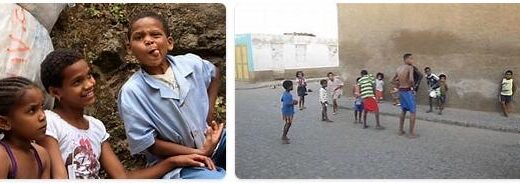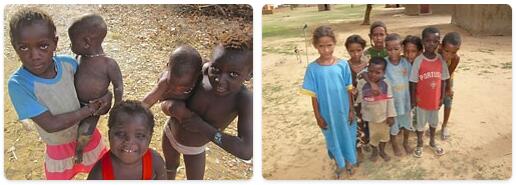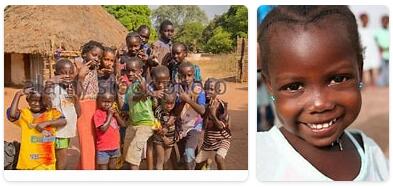SADC Functions
The cooperation is project-oriented and is based on two or more member countries having a concrete interest in having a project realized. By supporting the parts (the countries), the whole (the region) is strengthened. Reducing poverty and creating a single commercial market are important goals.
Trade
The Directorate for Trade, Industry and Investment works to realize economic integration between the SADC countries and to reduce poverty. One of the goals is to create a common market for southern Africa, based on the same principles as the EU. South Africa has been instrumental in this issue.
A free trade agreement between the SADC countries was concluded in 1996 and entered into force in 2000. According to this, all trade barriers would be gradually removed by 2012 while facilitating the free movement of people, goods and services between the member countries. Congo-Kinshasa and Angola chose not to accede to the FTA.
Decisive for the development will be South Africa’s actions, because the country’s economy is so much larger than that of other member states. South Africa intends to move faster than other states. A growing share of South Africa’s exports go to other African countries.
At the same time as SADC is trying to expand regional economic cooperation, competition between member states is increasing in terms of attracting foreign investors to the region, among other things through promises of good tax conditions. According to the African Development Bank, however, it is not customs duties that are the main barriers to trade in Africa, but shortcomings in the transport system, poor infrastructure and cumbersome bureaucracy.
Regional security
In 1994, SADC’s Defense Ministers agreed to set up a regional peacekeeping force to deal with possible conflicts in the Member States. Exercises with soldiers from several of the member countries were held in 1997, 1999 and 2002. At the same time, SADC is developing a regional crisis management center whose task will be to assist those affected in future natural disasters. SADC also participates in the work of removing landmines from the region and reducing the supply and smuggling of small arms in southern Africa.
The overall policy of the Political, Defense and Security Agency, established in 1996, is to prevent the stability of the region from being threatened by internal conflicts or external attacks.
According to topb2bwebsites, SADC has conducted two peacekeeping operations, one in Congo-Kinshasa in 1998 and one in Lesotho in the same year.
The war in Congo-Kinshasa led to great strains for SADC. The organization made efforts to mediate in the conflict. At the same time, the three member states Zimbabwe, Angola and Namibia intervened in the conflict on the side of the then Congolese President Laurent Kabila for various reasons. The interventions took place despite strong opposition from South Africa.
The peace agreements that could be concluded after efforts by the organization did not last, and it was instead South Africa that negotiated a more sustainable peace agreement in December 2002. In mid-2004, SADC decided to send a review commission to eastern Congo-Kinshasa where fighting was still ongoing.
In 1998, the SADC sought to mediate peace between the government and the opposition in Lesotho, where violent unrest had broken out. The Lesotho government appealed to the SADC for help. When the security situation in the country deteriorated after a coup attempt, South Africa and Botswana sent troops there to restore order. The operation was said to have taken place under the SADC flag but led to widespread criticism since the South African and Botswana soldiers took part in fierce fighting. With the help of SADC, a peace agreement could be reached and democratic elections prepared. The foreign troops were withdrawn in April 1999.
In 1998, SADC sided with the government in the civil war in Angola against the guerrilla group UNITA. When the UN imposed sanctions on UNITA in 2001, they were supported by SADC. The organization also participated in the fight against the trade in so-called illegal diamonds, which were considered to be UNITA’s main source of income. A peace agreement was reached in Angola in 2002, and UN sanctions against the country were lifted.
The unrest in Zimbabwe since 1999 has also posed a major challenge for SADC. The state-sponsored violence and repression against the opposition and the media in connection with the 2000 and 2002 elections has led the outside world to demand that SADC act against President Robert Mugabe.
Externally, the other SADC leaders have defended President Mugabe, but there are many indications that he has received harsh criticism behind the scenes. While SADC’s Council of Ministers stated that the heavily criticized presidential election in 2002 was free and fair, SADC’s parliamentary forum did not want to accept the outcome of the election. After reviewing the reports of both bodies, SADC finally agreed to approve Mugabe as president.



